Happy Friday, GPODers!
This is my second year starting veggies from seed and maintaining a full kitchen garden (rather than the couple of tomato and pepper plants I would buy in years prior). I can happily say that I learned a lot from last year’s successes and failures, and have implemented changes that have already increased my yield so far this year. One of those changes was incorporating way more flowers. I mentioned the power of flowers when discussing Kimberly’s incredible vegetable and flower garden in North Carolina earlier this week (check that post out here: Kimberly’s Golden Garden), and it inspired me to scroll through my camera roll to shout out the flowers that have been making my garden more productive (and beautiful) this year.
 The most exciting addition to my gardens has definitely been these Tip Top Mix nasturtiums (Tropaeolum majusannual). This variety produces a delightful mix of apricot, gold, orange, and scarlet blooms that are also a delicious addition to salads. All parts of the plant are edible, but the flowers have the strongest peppery taste. I haven’t harvested many of my flowers, however—they look too good in my beds!
The most exciting addition to my gardens has definitely been these Tip Top Mix nasturtiums (Tropaeolum majusannual). This variety produces a delightful mix of apricot, gold, orange, and scarlet blooms that are also a delicious addition to salads. All parts of the plant are edible, but the flowers have the strongest peppery taste. I haven’t harvested many of my flowers, however—they look too good in my beds!
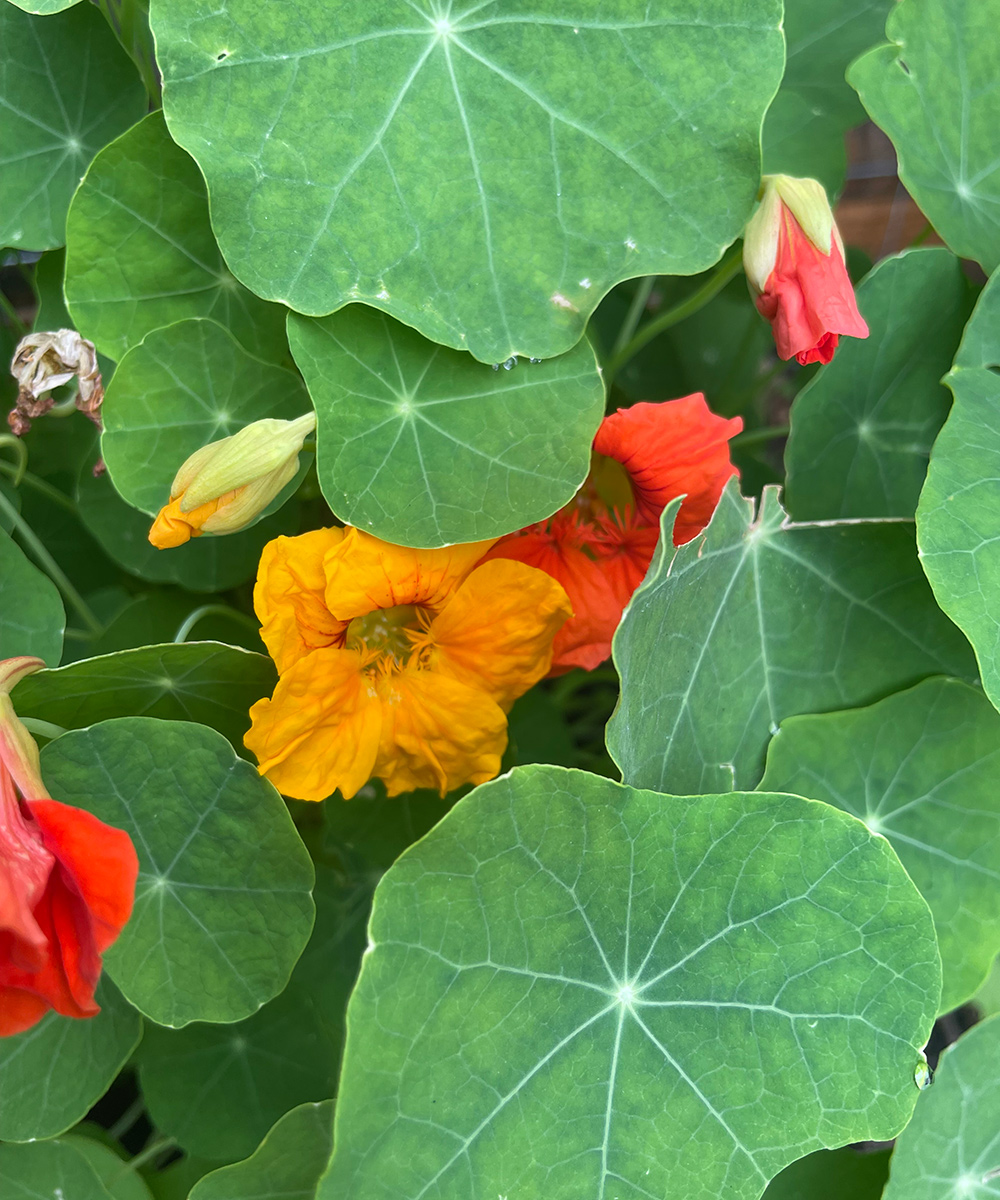 These stunning flowers make incredible color combinations all by themselves, and the shield-shaped leaves are also noteworthy. Some gardeners plant nasturtium for its ability to deter rabbits and deer, but I remove the risk completely with barriers around my raised beds.
These stunning flowers make incredible color combinations all by themselves, and the shield-shaped leaves are also noteworthy. Some gardeners plant nasturtium for its ability to deter rabbits and deer, but I remove the risk completely with barriers around my raised beds.
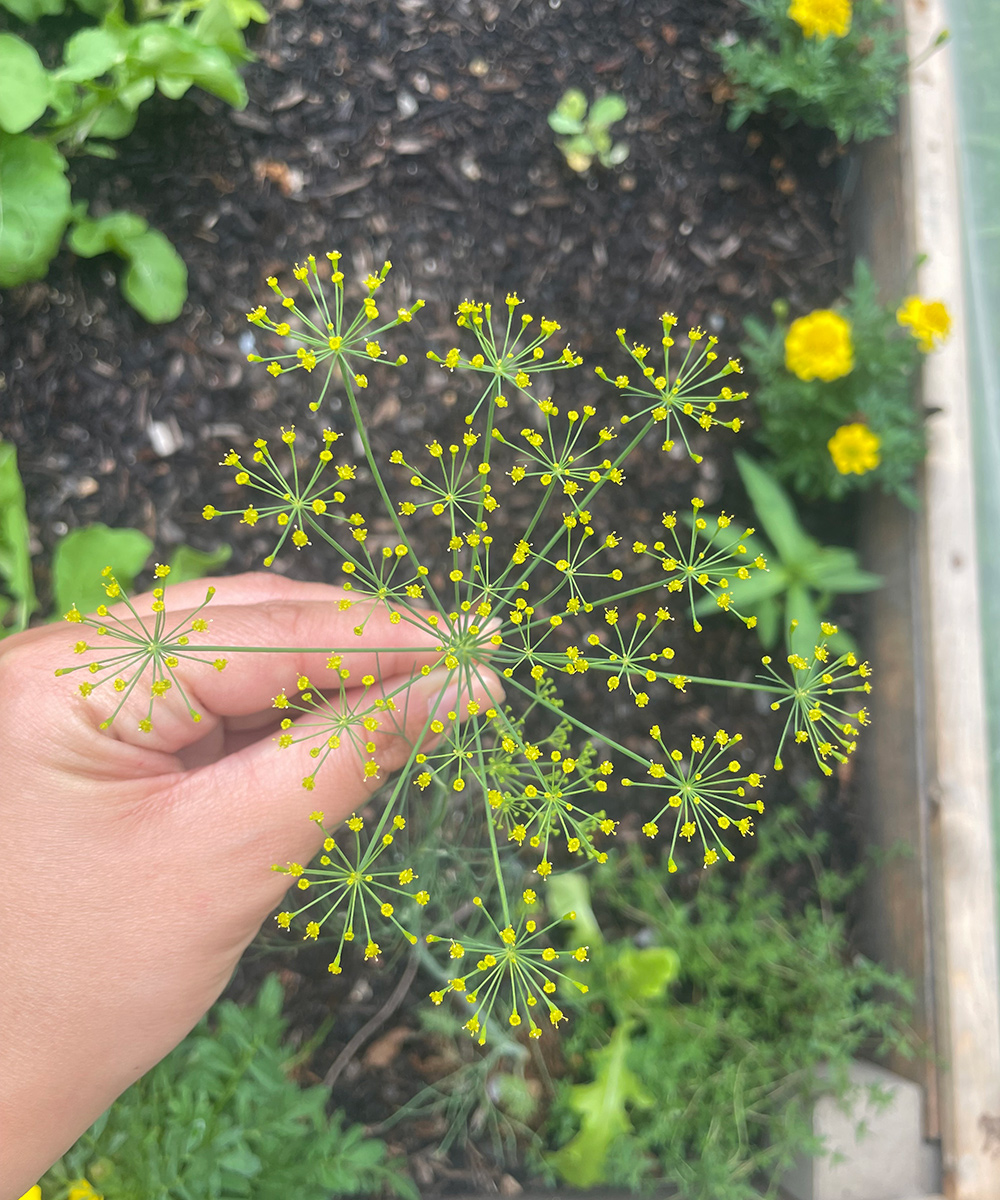 Some of the flowers in my veggie beds aren’t necessarily for the bees but for the seeds they will bear. I will let some of my herbs, like this dill, flower so they will hopefully self-sow and come back up next year. As a bonus, they add even more color and interest to the garden.
Some of the flowers in my veggie beds aren’t necessarily for the bees but for the seeds they will bear. I will let some of my herbs, like this dill, flower so they will hopefully self-sow and come back up next year. As a bonus, they add even more color and interest to the garden.
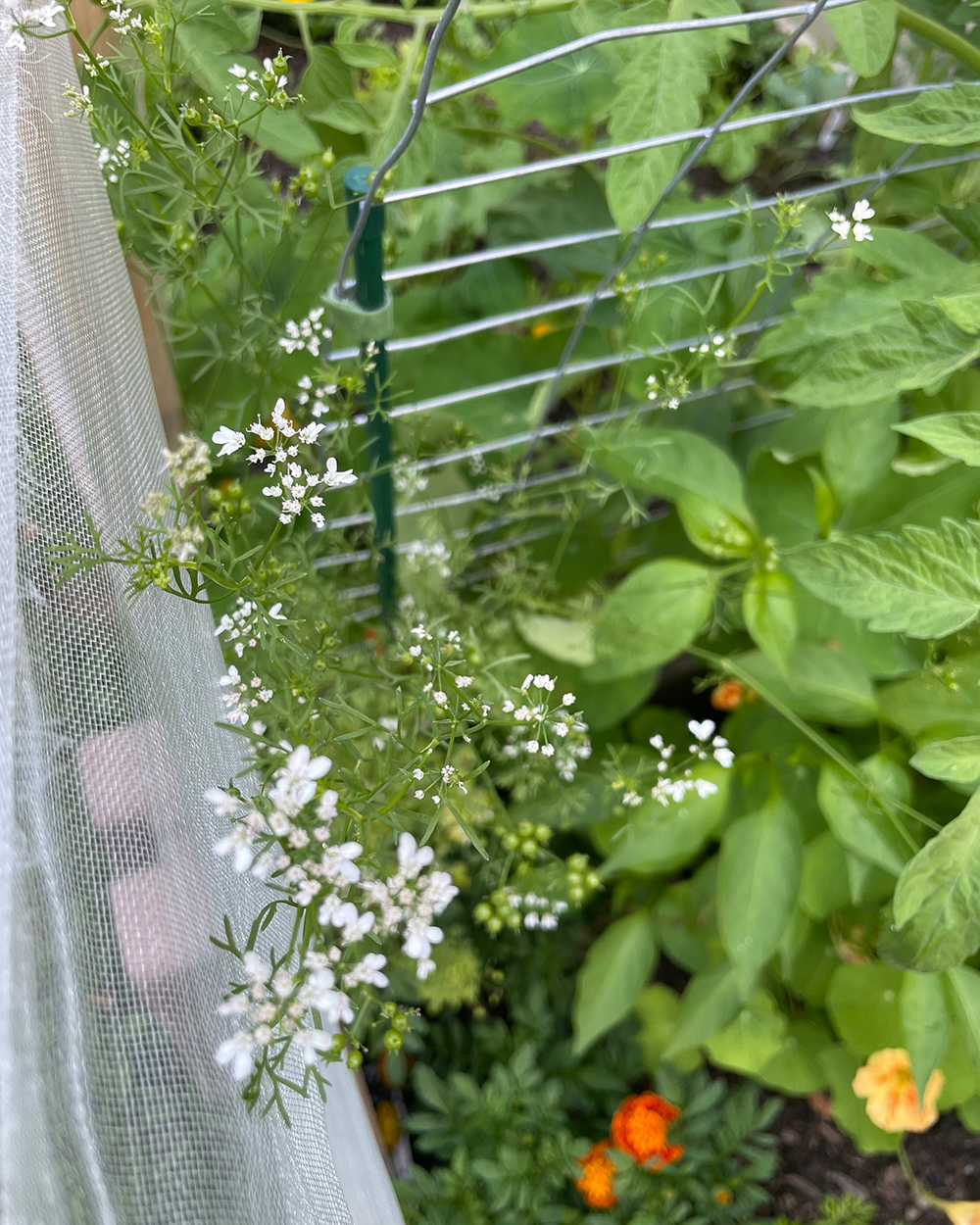 Cilantro is another herb I do this with, or rather, cilantro flowers give me no choice in the matter. I have a bad habit of planting my cilantro too late into spring, and in no time, it will start trying to flower. I pinch the buds back for a few weeks, attempting to get my plants to last a little longer, until I finally give up the fight and let these pretty little white blooms flourish.
Cilantro is another herb I do this with, or rather, cilantro flowers give me no choice in the matter. I have a bad habit of planting my cilantro too late into spring, and in no time, it will start trying to flower. I pinch the buds back for a few weeks, attempting to get my plants to last a little longer, until I finally give up the fight and let these pretty little white blooms flourish.
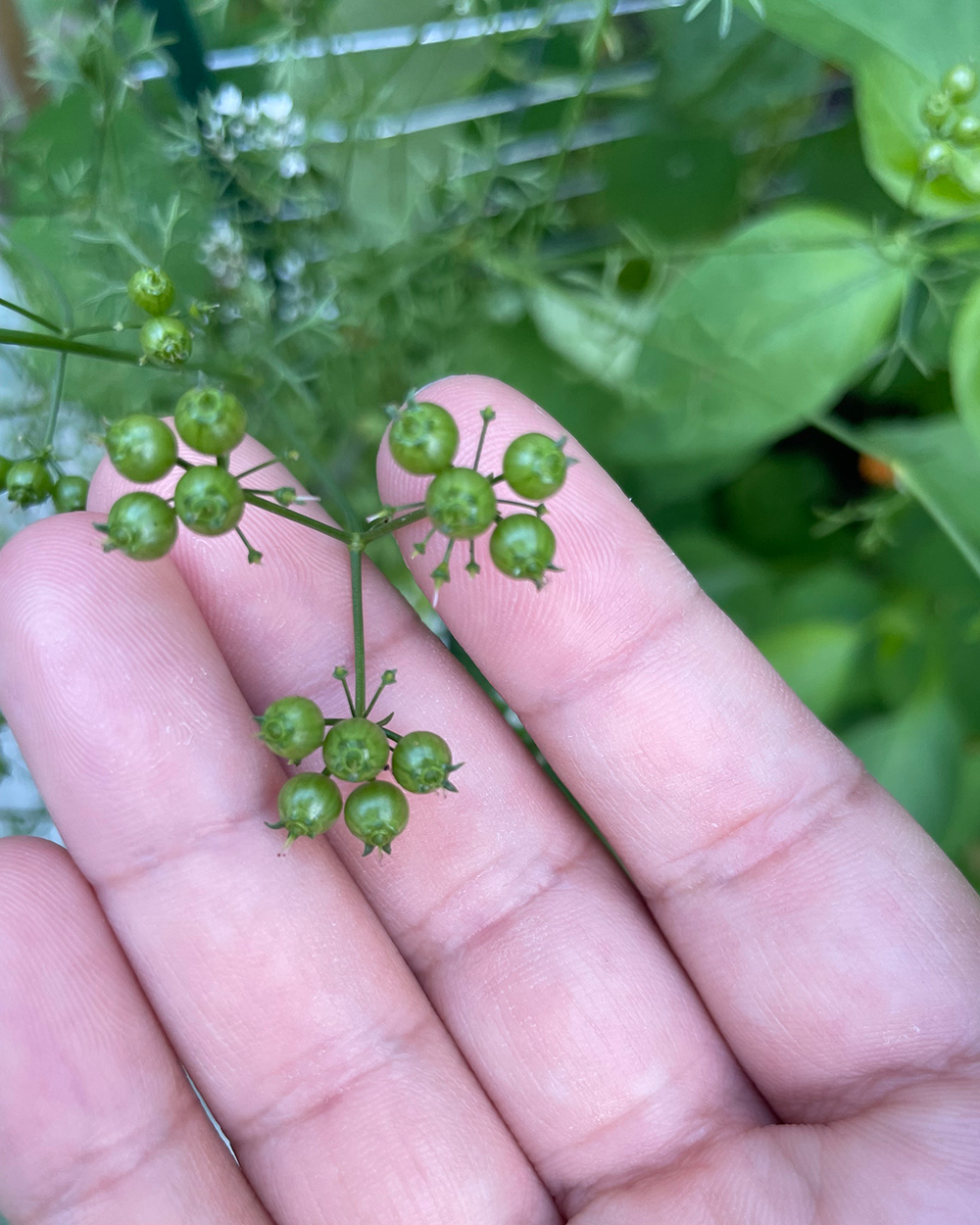 However, most of these adorable seeds don’t get dispersed into the garden. As soon as they turn brown, I trim the clusters off the plant and put them into a brown paper bag to dry out further. When all the seeds have fallen from the stems, I grind them up into coriander powder that I use all year.
However, most of these adorable seeds don’t get dispersed into the garden. As soon as they turn brown, I trim the clusters off the plant and put them into a brown paper bag to dry out further. When all the seeds have fallen from the stems, I grind them up into coriander powder that I use all year.
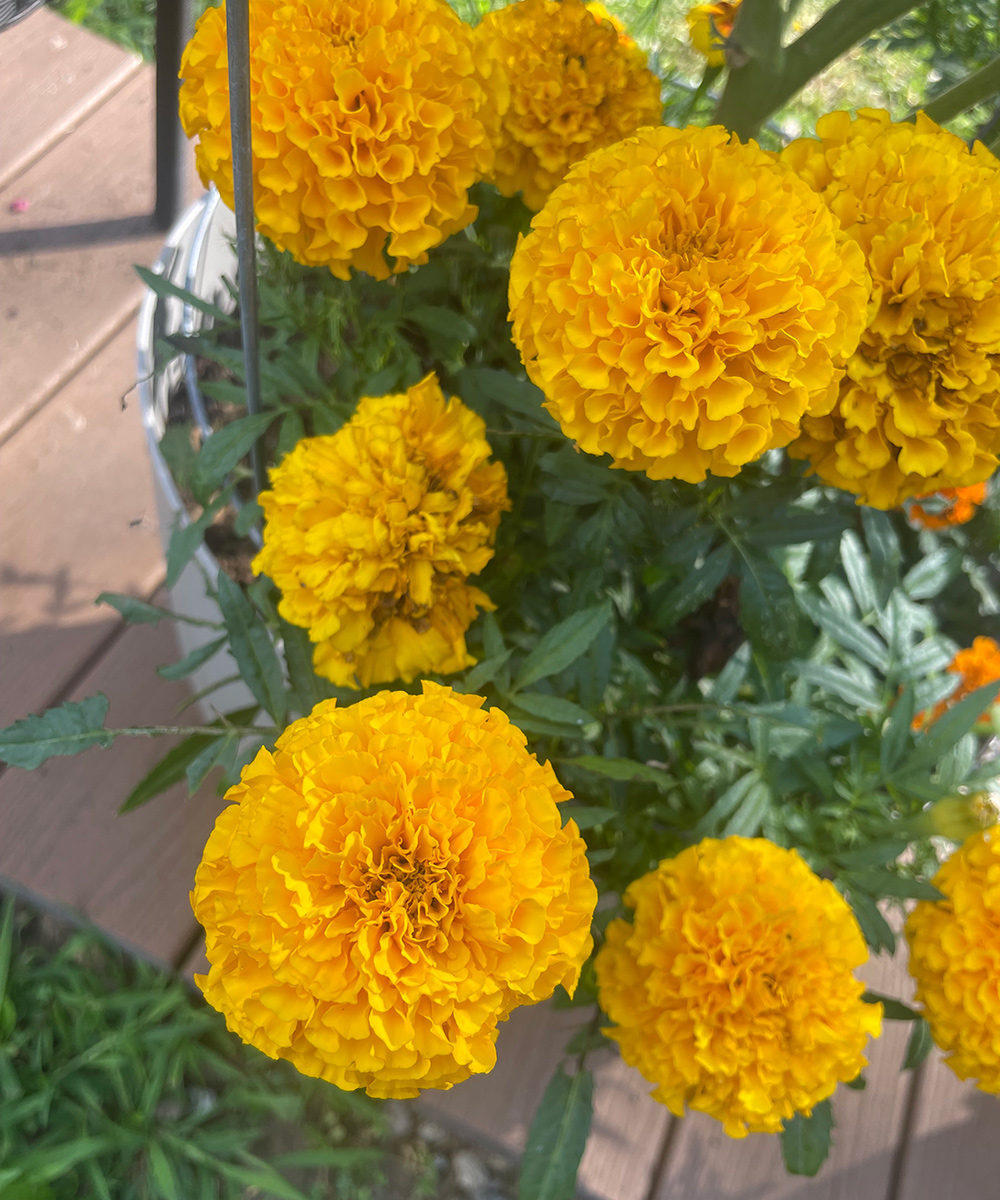 Marigolds are not a new addition to my gardens this year; I enjoyed a few different varieties last year. However, I skipped starting marigolds from seed, opting to purchase them from my local nursery, and got way more plants and more varieties. So many, in fact, that I decided to plant some in my tomato and pepper containers as well. These giant African marigolds (Tagetes erectannual) have definitely been producing the most flowers so far this year.
Marigolds are not a new addition to my gardens this year; I enjoyed a few different varieties last year. However, I skipped starting marigolds from seed, opting to purchase them from my local nursery, and got way more plants and more varieties. So many, in fact, that I decided to plant some in my tomato and pepper containers as well. These giant African marigolds (Tagetes erectannual) have definitely been producing the most flowers so far this year.
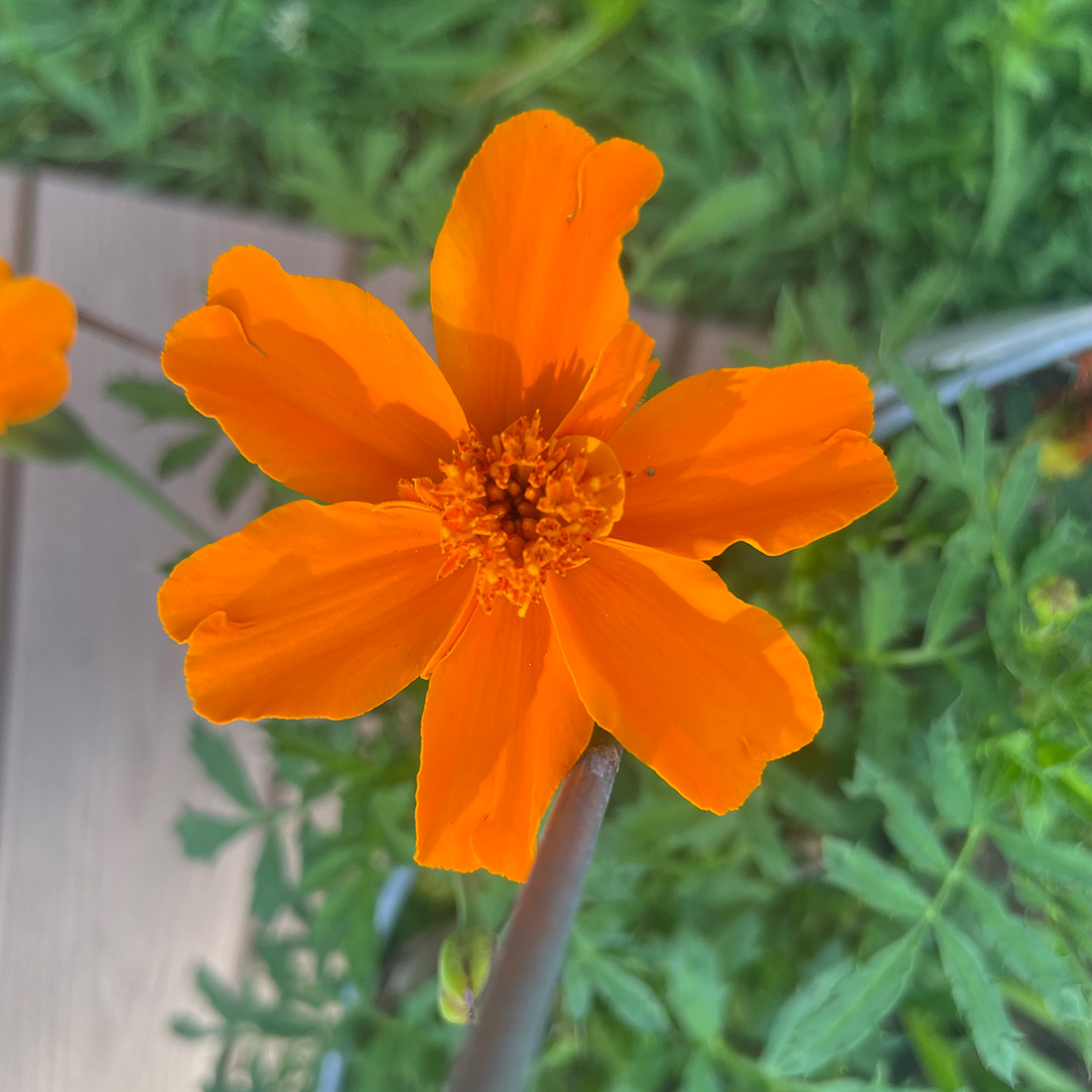 Disco Orange French marigolds (Tages Poeticannual) have been much less floriferous, but their bright, single blooms have been far more popular with the bees.
Disco Orange French marigolds (Tages Poeticannual) have been much less floriferous, but their bright, single blooms have been far more popular with the bees.
 These French marigolds with double blooms—I believe they’re the Bonanza™ Mix—are another variety that have bloomed sparingly, but their incredible colors and double crested flowers are show-stopping when they do pop up.
These French marigolds with double blooms—I believe they’re the Bonanza™ Mix—are another variety that have bloomed sparingly, but their incredible colors and double crested flowers are show-stopping when they do pop up.
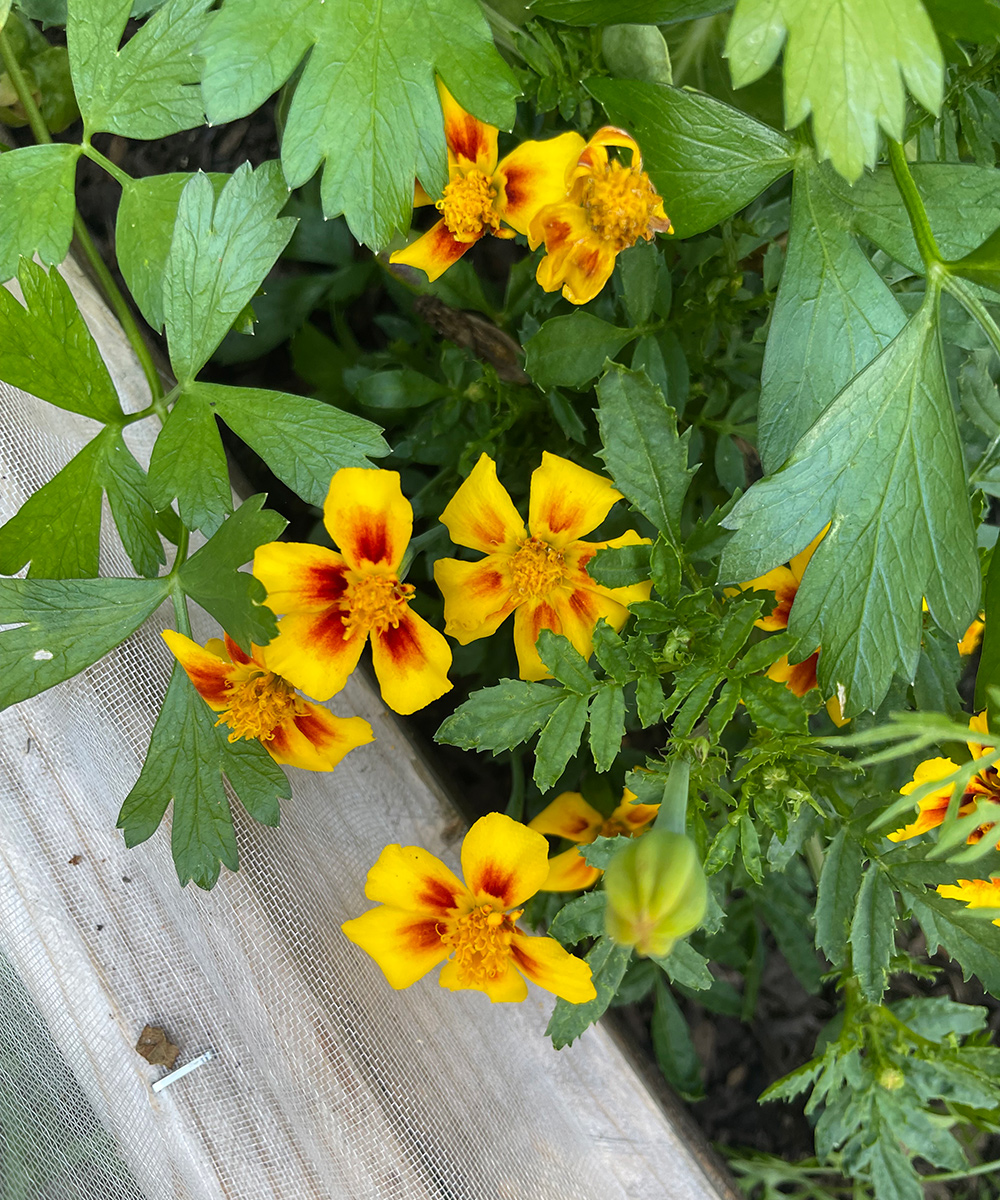 Lastly, another single French marigold called Disco Marietta: These may be my favorite of the varieties I planted this year. It has a simple form but really fabulous coloration.
Lastly, another single French marigold called Disco Marietta: These may be my favorite of the varieties I planted this year. It has a simple form but really fabulous coloration.
I hope you enjoyed this little tour of my veggie garden blooms! If you’re interested, I can give you a tour of the vegetables and herbs I decided to grow this year, with a breakdown of what flourished and what completely failed. Let me know in the comments!
What plants have given your garden a boost this year? Is a new planting giving an old bed a refresh? Did you rip out that thuggish species that was running rampant in a neglected corner? The common sentiment at Garden Photo of the Day is that the garden is never truly done. While that can be overwhelming, it also means endless opportunities to reevaluate, reimagine, and revitalize. Consider sharing your great garden achievements with the blog! Follow the directions below to submit photos via email, or send me a DM on Instagram: @agirlherdogandtheroad.
We want to see YOUR garden!
Have photos to share? We’d love to see your garden, a particular collection of plants you love, or a wonderful garden you had the chance to visit!
To submit, send 5–10 photos to (email protected) along with some information about the plants in the pictures and where you took the photos. We’d love to hear where you are located, how long you’ve been gardening, successes you are proud of, failures you learned from, hopes for the future, favorite plants, or funny stories from your garden.
Have a mobile phone? Tag your photos on Facebook, Instagram, or Twitter with #FineGardening!
Do you receive the GPOD by email yet? Sign up here
Fine Gardening Recommended Products
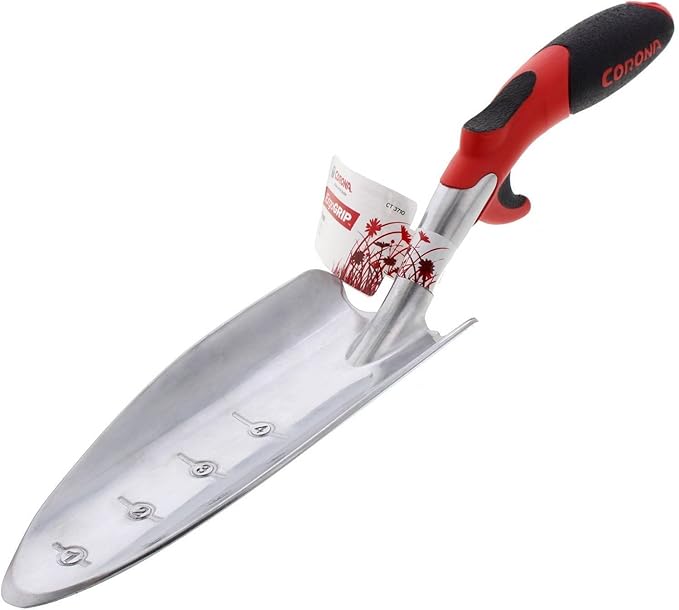
Corona E-Grip Trowel
Fine Gardening receives a commission for items purchased through links on this site, including Amazon Associates and other affiliate advertising programs.
Handle Material: Aluminum. Handle Length: 14-1/2 in. Overall Length: 14.5 in. Head Material: Aluminum. Handle Color: Red.

Channel Link Rain Chain, 8.5 Feet, Pure Solid Copper
Fine Gardening receives a commission for items purchased through links on this site, including Amazon Associates and other affiliate advertising programs.
Elevate Your Exterior: Replace unsightly gutter downspouts with this stunning rain chain. Enjoy the mesmerizing sights and soothing sounds of rain cascading gracefully down, adding beauty to any outdoor space. Exceptional Durability: Crafted from pure copper, our rain chains for gutters are meticulously hand-assembled, promising a lifetime of classic beauty and resilience. Install in a Snap: No need to be an expert. Easily swap your rain chains for downspouts using the supplied hanging hook. Our rain chains for outside are compatible with any standard gutter hole. Optional gutter installer sold separately. Unrestricted Water Flow: The open-flow design of the gutter chain downspout allows water to effortlessly cascade down the chain without fear of backing up, even by heavy rain. Dimensions: Cup: 1.25 inches wide, 2 inches tall, 8.5 feet long, Cup count: 25
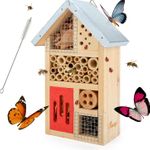
Niteangel Natural Wooden Insect Hotel, Garden Insect House for Ladybugs, lacewings, Butterfly, Bee, Bug
Fine Gardening receives a commission for items purchased through links on this site, including Amazon Associates and other affiliate advertising programs.
The insect nest box provide a safe environment where garden creatures can shelter, hibernate and lay their eggs, the insect house can also keep insects from entering your warm room. The insect hotel makes it easy to find and observe fascinating creatures. the butterfly, bees and ladybugs can use this product as habitat. Dry wood and Bamboo can be home to many insects such as ladybirds and lacewings which eat aphids and help keep your plants pest-free. the insect hotel improve the growth of plants in your yard by attracting beneficial insects. The iron design on the top can keep the insect house from rainwater. Let the insect house have a longer useful life and make the insects more comfortable. If you only have a balcony or yard, the hanging garden shelter is ideal as it provides a choice of suitable habitats in a small area.

